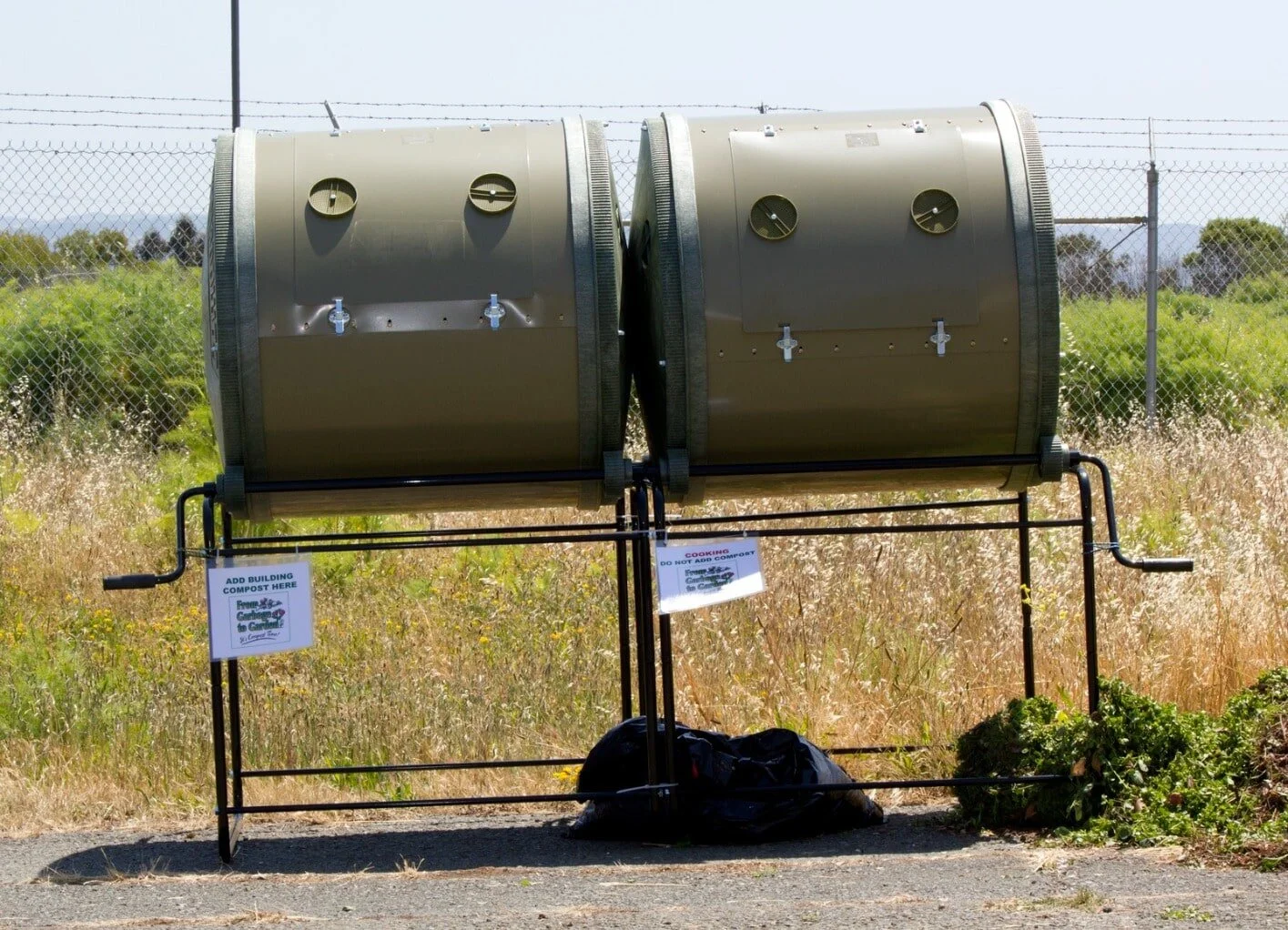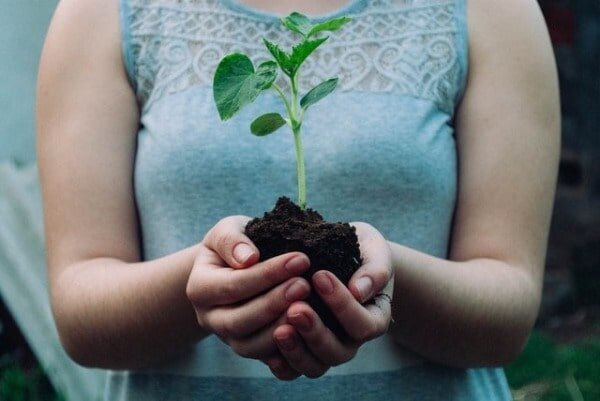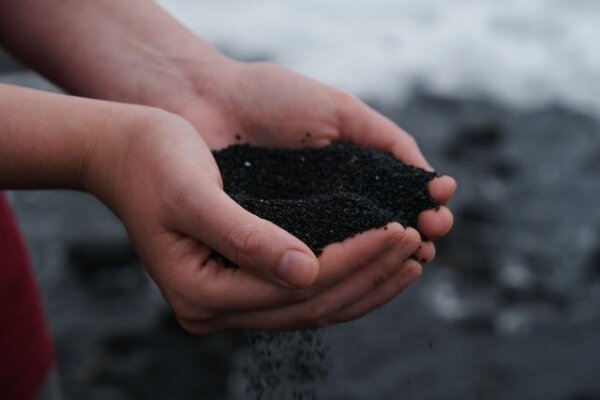Table of Contents
Systematic and nutrition-rich composting is essential for successful gardeners. It’s eco-friendly, zero-waste and plant life loves it. The natural process helps you create fertilized soil rich in nutrients.
At Oak Hill Gardens, we know it takes more than piling up organic materials and leaving them to decompose. Beware of mistakes! Yes, microbial activity degrades raw materials and speeds up decay, but it’s hard to turn a heap full of rotting compost with a shovel or a hayfork. You need to aerate the pile and add fresh materials to the composting matter and also shuffle it, so it’s homogeneous.
Well, here is some good news!
Growing in popularity, compost tumblers, and bins, help with the burdensome task of efficiently decomposing organic matter!
Read our guide and learn what a compost tumbler is, how to use tumbler composters, what are the pros, cons, and how to start tumbler composting today!
Without further ado,
What is a Compost Tumbler?
Compost tumblers are plastic or metal made-to-rotate closed barrel-like standalone compartments designed to host organic matter over the course of natural decomposition by microbial activity.
Compost tumblers make it easy to rotate and blend organic matter, thus preserve the heat generated from the decay, which is perfect for composting wood chips fast.
Regular mix-up helps organic waste decompose faster and turn into rich soil. You can choose between horizontal or vertical axle foundations.
Do you have a reliable soil test kit?
Check our product selection!
How Do Compost Tumblers Differ from Compost Bins?
Large DIY compost bin.
While both compost tumblers and compost bins get a heavy recommendation from renowned landscaping experts:
Bins have an open bottom, and you should place them on the ground.
Tumblers have fewer limitations on how and where to use.
Both tumblers and bins are a cheap way to make compost for your gardens, be it for homemade orchid potting mix, various outdoor species, container gardening, etc.
But Compost Bins Have Their Downsides
You need a pitchfork or a shovel to mix bin compost, and it’s hard to get it inside a bin.
A compost bin can’t retain heat because of its open foundation, thus decelerates decay.
Pests can dig underneath the bin sides and contaminate your compost.
With bins, you can prep both mulch and compost, but with tumblers, it’s all about composting.
Overview of Compost Tumblers
Don’t rush to buy a tumbler. Gather information and make an informative decision.
If a compost tumbler is hard to rotate, don’t buy it. Choose a model that suits your production needs. There are 3 common types: sealed, aerated, and dual compost tumblers.
Large compost tumblers are more efficient than small ones. But they are harder to use.
The composting cycle takes up to three months, and you have to load the tumbler in one shot. It takes longer if you add fresh material.
Compost in the summer. The tumbler needs strong insulation, otherwise cool air enters and slows the decay.
Worms do wonders in compost heaps. They decompose organic material and drop nutritional castings. But you can’t use them in a compost tumbler. They die when the temperature inside rises.
The soil you produce in the tumbler originates from bacterial and fungal contact. The high temperature inside the tumbler eliminates weeds and spores. The turf is loose and rowdy. Use it as mulch or dig it into flower beds, as there’s nothing as mesmerizing as the scent of freshly cut flowers. DIY fertilizer done via compost tumblers is not as rich and crumbly as a heap of classic compost, but here is a petty trick. Remove it from the tumbler once it’s ready and keep it on the side. Allow it to decompose more so worms can get inside and do their part.
Grow, grow, grow!
Advantages of Compost Tumblers
Your compost by-product is ready to use.
Using a homemade organic fertilizer for your fruits and veggies is amazing, but there are more gardening goodies to learn. All you need is good planters and love! My personal preferences lean towards the solid Monaco Fibrestone style for larger plants, but for smaller greenery, such as orchid pots, you could go for less sturdy holders.
Compost Tumblers Attract No Rodents
Get a metal tumbler with the compost container high above the ground to restrain rodents. The sealed compartment keeps away vermin, and you don’t have to open it.
We recommend rabbit repellents and squirrel repellents. In the case of having bird feeders, use models that are squirrel-proof!
Compost Tumblers Cause No Back Pain
Choose the proper equipment, such as kneelers, to avoid back strains, as it’s hard to rotate the container on the ground.
Get a tumbler with a handle or geared cogs, and ensure that there is space to place a wheelbarrow below to unload it. This eases physical labor associated with shuffling the compost.
Compost Tumblers Have Little Space Limitations
The best part of using one is it being compact and crazy functional. You need a yard to compost in heaps, but you can use a compost tumbler to complement any relaxing home garden. It takes far less space than your classic compost corner, and not to mention keeping nasty odors inside.
Make sure to place a container underneath to collect fluids dripping!
Compost Grass & Meat Scraps
You can leave grass clippings and meat leftovers in a compost tumbler.
The tumbler aerates when you rotate it, so there is no stink and slime.
But you have to add dry material to the mixture.
The volume of the grass decreases in a week if you turn the tumbler every day.
Afterwards, you can mix it into a normal heap.
Drainage holes are mandatory for compost tumblers.
Collect the nitrogen-enriched solution and use it as liquid fertilizer.
Installing a composting tumbler is a must for any outdoor kitchen corner! When it comes to leftovers, the experts at the Compactor Management Company comment that there’s nothing better than a professional-grade food composter, but it would only make sense if you have a large turnover of mass to recycle, yet the technology is inspiring.
Compost Tumblers Work Fast
How long to make compost in a tumbler? If you have the right temperature, carbon, nitrogen levels, perfect conditions, then compost is ready in less than 3 weeks.
But you must prepare for the task:
Follow the instructions manual of your device to speed up the composting process.
Measure ingredients to balance carbon and nitrogen levels.
Track moisture and temperature.
The end product is rough soil, that you can use to topdress your lawn with mulch. You don’t have mulch? Check the best mulch products we use.
Compost Tumblers Raise Property Value
According to professional property buyer Paul Gibbens, having a corner tailored to recycling organics can have an immensely positive impact in the case of property valuation. This comes as a great suprize as a compost tumbler does not only reduce waste but raises real estate value!
Drawbacks of Compost Tumblers
Composting requires dedication.
The Price Factor
Compost tumblers have a solid structure to support the massive composting matter. They have legs or wheels, which increases their cost. Bins are cheaper because they have an open bottom and don’t have to support the compost weight.
Large Tumblers Are Hard to Rotate
Most compost tumblers hold up to 9.5 cubics of composting material. Large units are available, but it’s difficult to spin the full container. Get a model with a rod or gears to help you rotate the drum.
How to Use Compost Tumblers
Rotate to aerate the compost and blend the components.
Compost food scraps such as meat, fish, and animal fat are considered taboo for compost bins
The high temperature inside the container decomposes the food and keeps rodents off-limit.
Depending on the size and model you choose, you could even use it as an aid in balcony gardening, too!
Tumbler Composting, Final Words
The result is a mixture is rich in plant nutrients and beneficial organisms as a fertilizer and a soil conditioner.
Whether you are a hobby gardener or a pro, the compost tumbler helps you create organic soil for your plants.
Composting is a fun and sustainable method, but research before you start and learn the basics of composting before you get your hands dirty.
Use a compost tumbler for rich, natural soil without mess and back strains. Happy composting!
Author: Dmitri Kara
Hi, I’m Dmitri!
Started as a jack of all trades back in early 2012, Dmitri Kara is a recognized expert in a wide range of domestic and commercial trades. Dmitri Kara has appeared on reputable outlets such as Today.com, Metro.News, Telegraph.co.uk, ReadersDigest.com, Quote.com, Reviews.com, Plus.net, IkeaHackers.net, and many more. You can get in touch at https://twitter.com/@dmitrikara.





